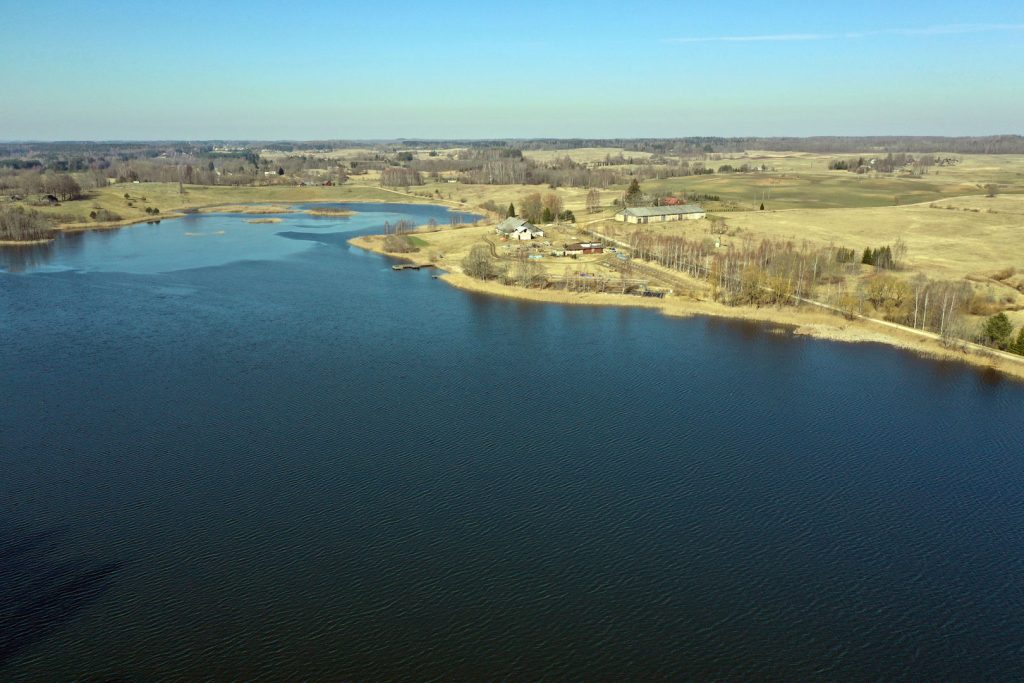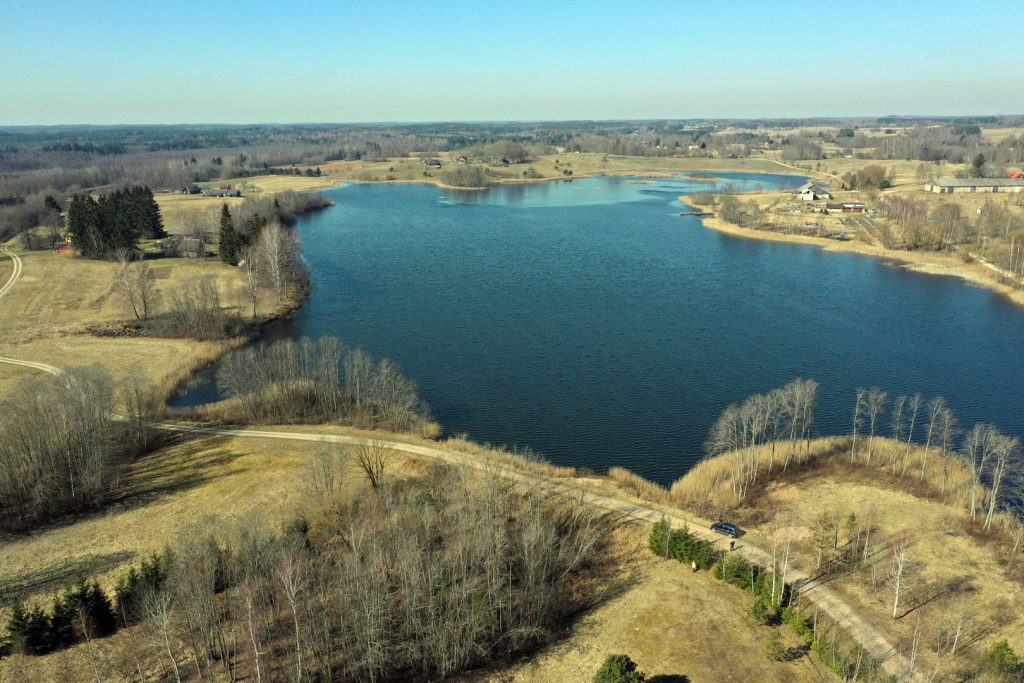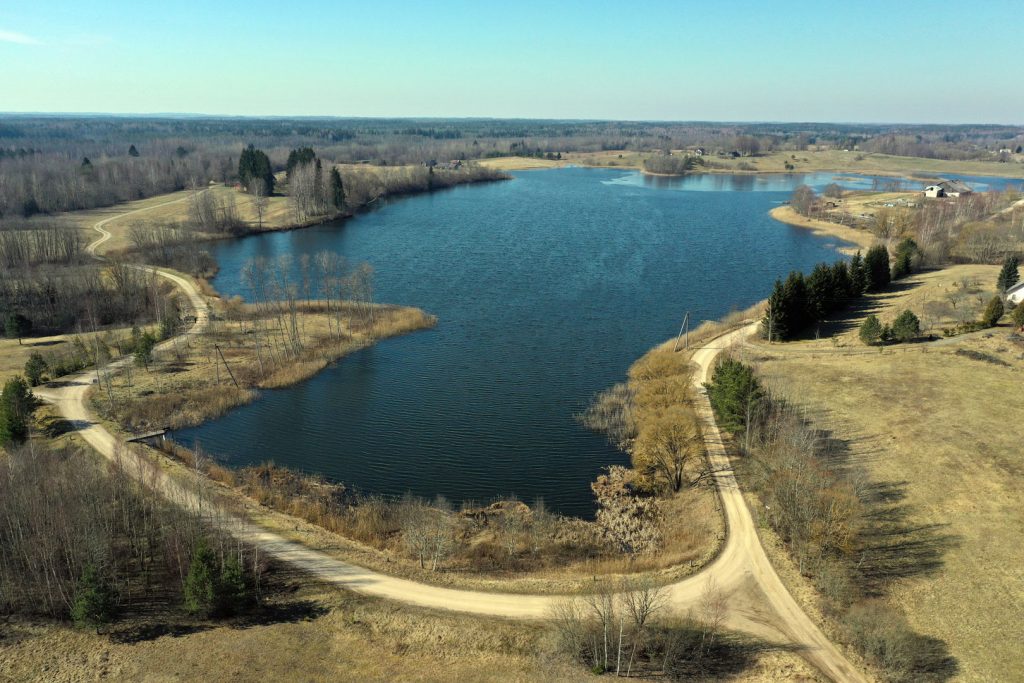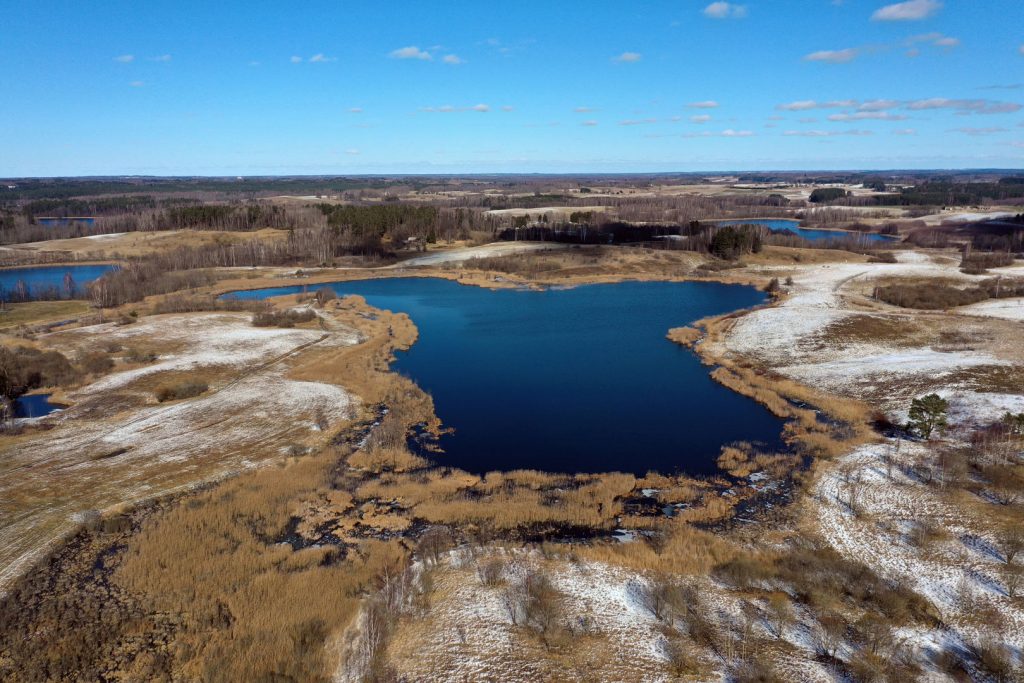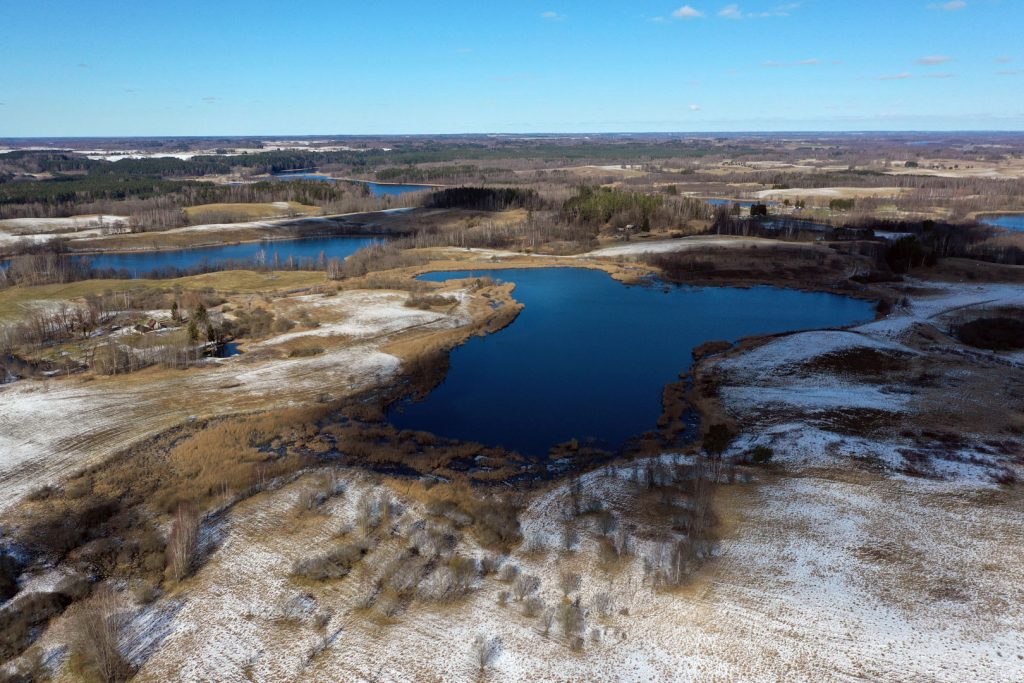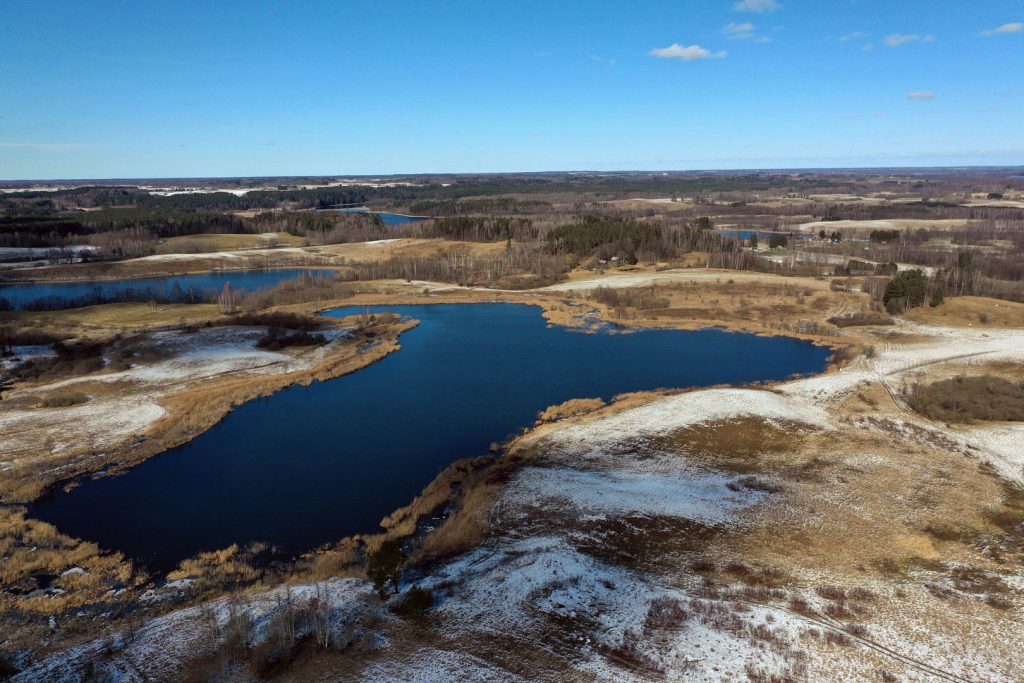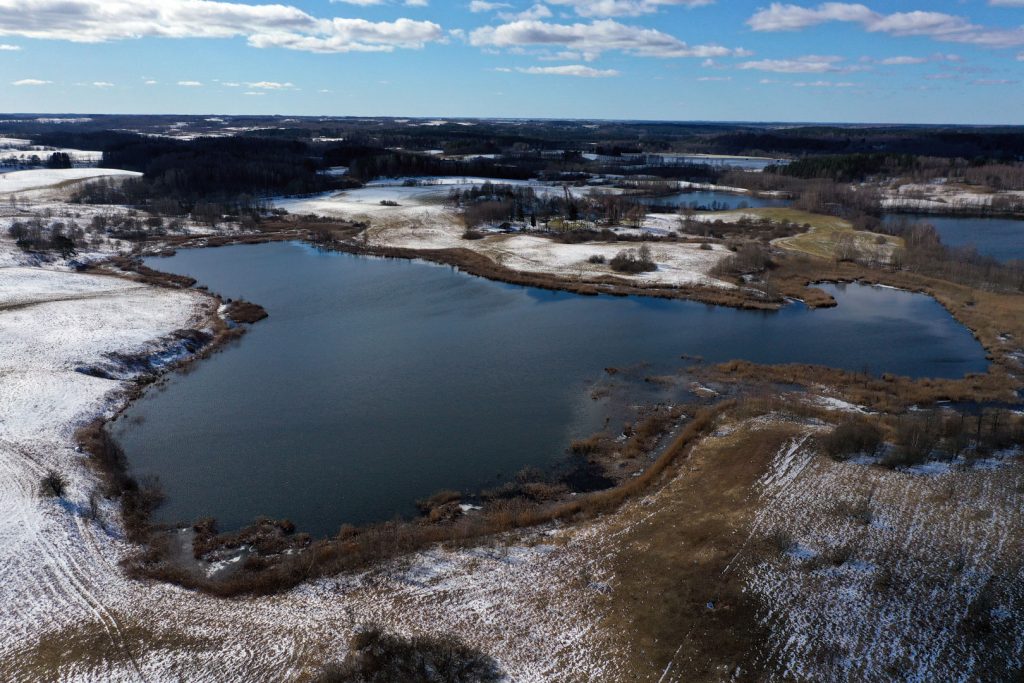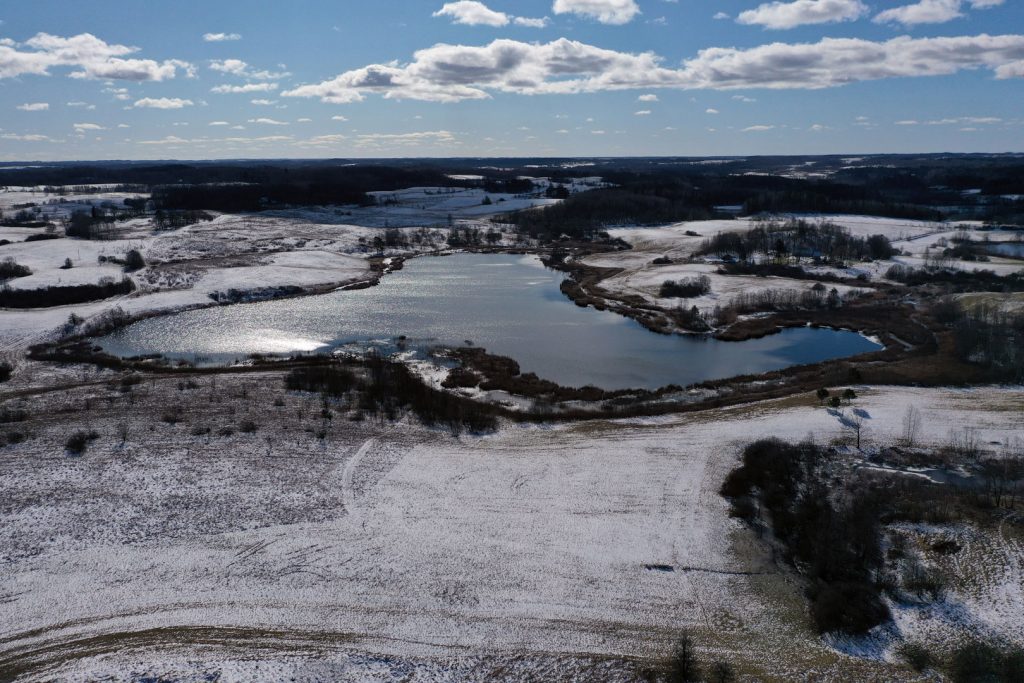Dumblis (Liminas) ir Dumblys
A 17- ha lake situated about 2 km south of Kuktiškės, on the junction of Utena and Molėtai districts. The lake is of glacial trough origin, from the west to the east 1.1 km (average width reaches only 0.13 km), coastline 2.6 km; on the western bank there is the village of Perkasynė. The basin (area 6 km²) is wooded, sandy, there are two more lakes (Alksnas and Kuojinis). The rivulet Dumblė flows from the lake, flows into Aisetas lake (Žeimena basin). The name comes from Lithuanian dumblas (slime).
Local people of Šikšniai village, some of them fishermen, call the lake Liminas. It was them who walked a trail in the reeds on the northern bank. The wall of the reeds is so thick that to find it for first-comers for fishing is nearly impossible. But those who can afford to keep a boat, have a definite advantage. The lake is shallow, horn-shaped, slimy and overgrown on all sides. However, such sludge is favored by tench, so to miss the beginning of May when tench finally awake from winter drowsiness would be an unforgivable mistake.
It is normal to catch two three tench at one fishing. If you succeed to bring home four five tench, over a kilogram each, you are undoubtedly tench-catching expert.
The lake is stocked with carps, broad-headed white amurs, but it is doubtful if it is a rational solution as during harsh winters there is shortage of oxygen.
The lake is quite deep; the littoral zone is narrow. The lake is surrounded by low banks, mostly overgrown with mixed forest. In some places arable fields and meadows reach the lake.
The shore of the lake is well visible, the ground in the littoral zone is sandy with pebbles, deeper the bottom is covered with a thick layer of slime. There are remains of trees on the bottom. The lake becomes deep very suddenly, the band of heliophytes is narrow (3-5 m), consists of sparse short reeds. In small bays there grows some floating vegetation. The lake is flown-through; in the western end it connects with Alksnas lake. The water in the lake is quite clear of brownish hue. According to a biological type it is a eutrophic lake.
During the studies in July 1999, 7 species of fish were caught: tench, pike, roach, bass, rudd, bream and ruff. According to abundance for one fishing dominated roach, basses and breams, according to the biomass – tench, pikes and roach. According to local fishermen, bleak also live in the lake, but they were not caught during experimental fishing. The annual commercial production of the fish in the lake during the studies was 17.5 kg/ha. The growth rates of roach in the lake are good, those of pikes, basses and tench average.
Since old times broad-fingered crayfish have lived in Dumblis lake. Catching of crayfish was restricted in 1978-1992. In 1993 list of lakes with crayfish this lake was not included and according to the data of 1995-1996 inventories, there lived broad-fingered crayfish in the lake. During the studies in 1999, the presence of broad-fingered crayfish was confirmed, but their population was not numerous.
In 1998 Dumblis lake was stocked with 75 000 small pikes. It was recommended to continue stocking the lake with pikes as the feeding base for these predators is good – there are a lot of roach, breams and rudds. The pike is an in-shore biomeliorator and an excellent object of sport fishing. It was recommended to stock the lake with breams since the present composition of fish does not completely use the feeding base of benthos which is really rich in this layer of slime.
Another 11- ha lake on the junction of Utena and Zarasai districts, about 1.5 km east of Traidžiūnai village and Užpaliai-Dusetos road. The lake is of the shape of a triangle. Its length 0.55 km, average width 0.19 km, coastline 1.7 km. A rivulet flows out into the river Šventoji. There are several lakes on the boundaries between Utena, Zarasai and Rokiškis districts. In the past in this location there were boundaries of Užpaliai, Dusetos and Jūžintos small rural districts. In Užpaliai rural district there is situated an 8.6- ha-size Dumblis lake. It belongs to Vaiskūnai geomorphological reserve which was founded with the aim to preserve abundant thermokarst hollows which reformed the relief. The lake of a triangle shape, is not deep, with low and marshy banks. From it a nameless rivulet flows out to the river Šventoji. The lake is very shallow, its bottom is covered with a thick, soft layer of slime, so in harsh winters there is a real danger of suffocation. The lake is fishy, with excellent conditions for tench, roach, rudds, breams, basses and pikes. Tench are especially abundant, however, it is quite problematic to catch them with a fishing rod, because bait constantly disappears in the soft smudge and fish don‘t bite on a lifted hook. Besides, there are so many rudds that they come in squads to the tamed location and do not wait for bait to sink. Actually, the lake becomes accessible and possible to fish in only when the first ice stops moving.

